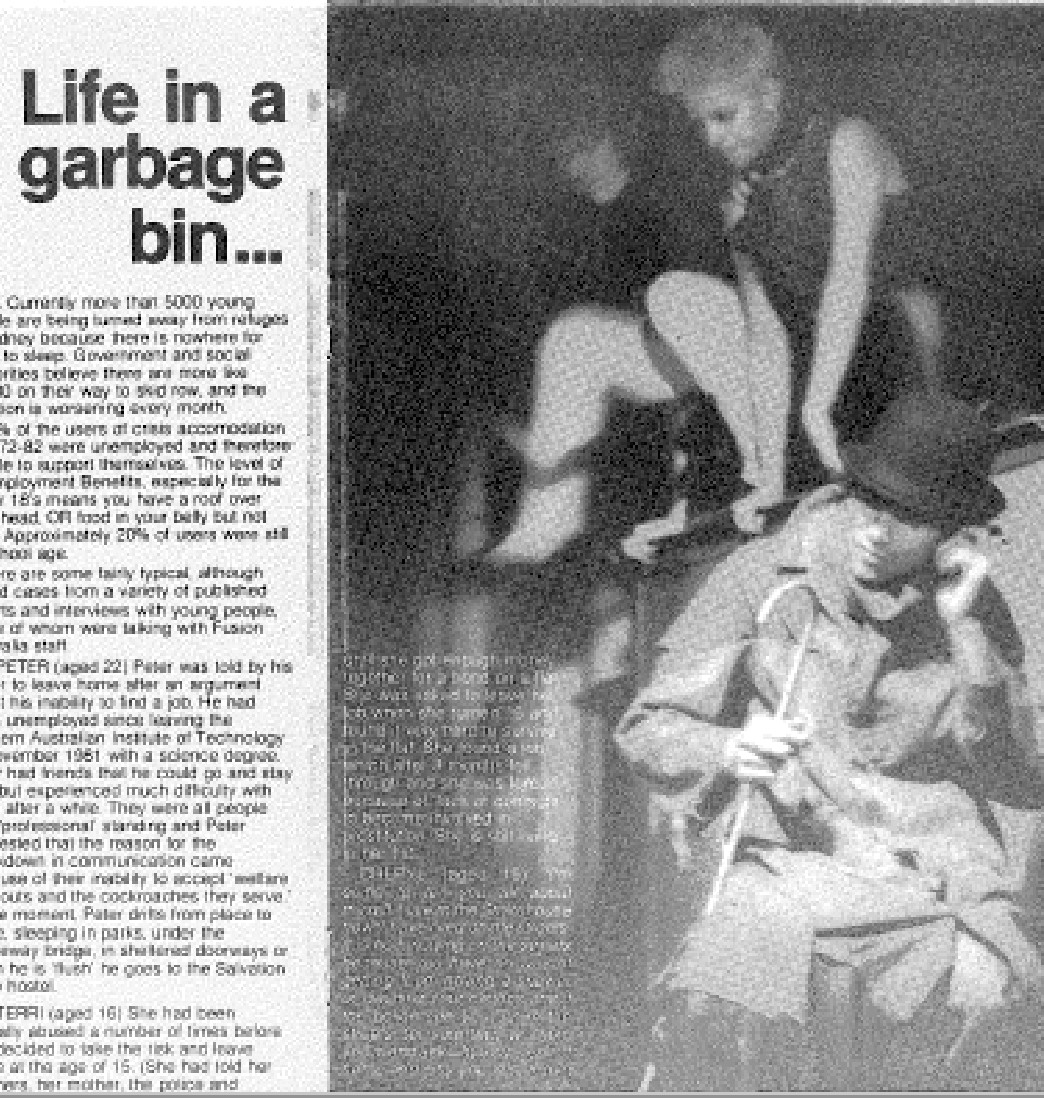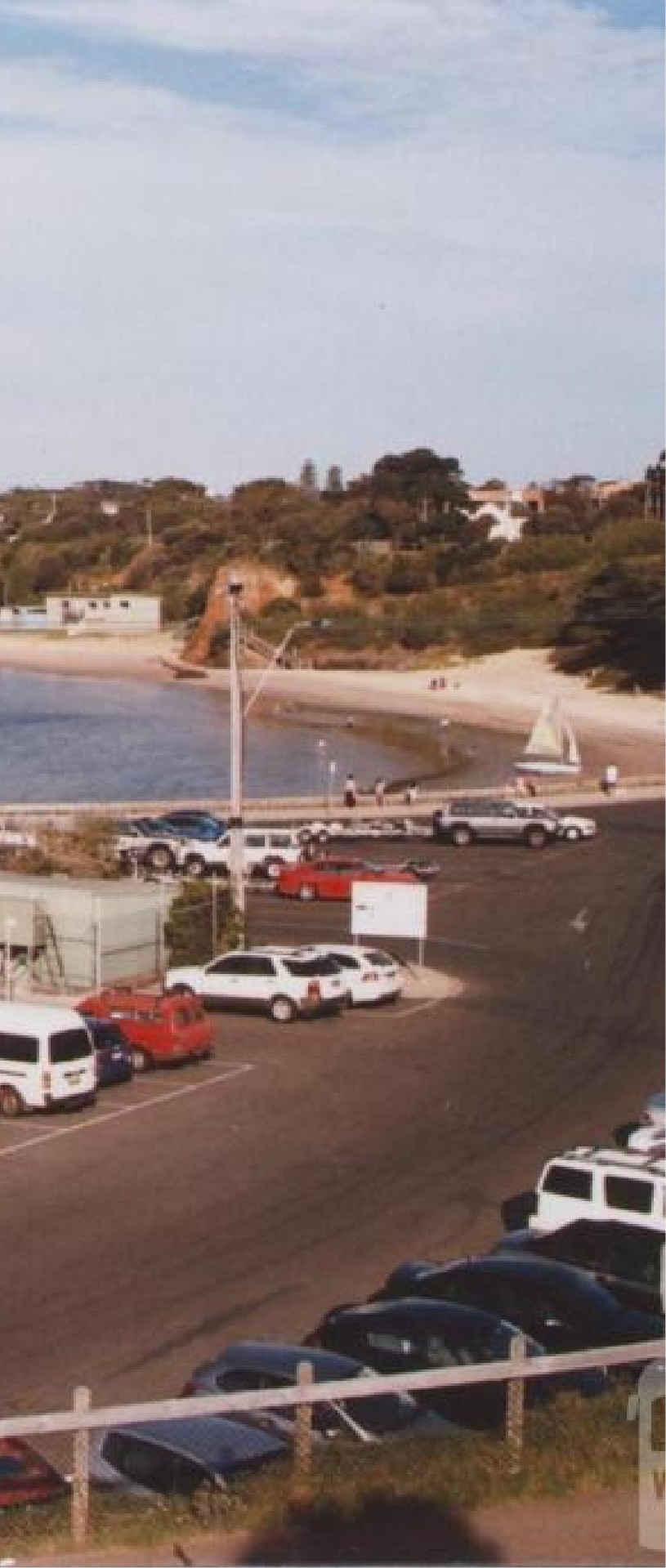The History of
Fusion Mornington Peninsula
In the late 1970s, a group of young adults led by David Coyle, launched Arrows drop-in centre for young people on Main Street, Mornington.
The founding team consisted of young adults just beginning their careers, with limited financial resources. Despite their modest means, their passion for supporting local youth drove them to make significant personal sacrifices. During a pivotal meeting around a simple table, each member privately wrote down their potential financial contribution toward the year’s rent. When they revealed their commitments, the total amount perfectly matched what they needed—an extraordinary coincidence that felt nothing short of miraculous.
Once the drop-in centre opened its doors, these dedicated volunteers immersed themselves in hands-on youth work. They spent countless hours playing pool with teenagers, serving warm fruit toast, and most importantly, building genuine relationships with young people from the local community.
What began as an outsider organisation gradually transformed into something much more significant. Fusion’s relationship with Mornington Peninsula residents deepened and evolved until the distinction between volunteers and locals dissolved entirely. Together, they formed a unified team that expanded operations to include the drop-in centre, monthly day trips, comprehensive school programs, and various community events. This diverse group included full-time volunteers alongside teachers, business owners, and local artists, all united by their commitment to youth development.
During this period of growth, an unexpected opportunity arose. The Mornington Peninsula Shire had recently acquired the former army barracks at Balcombe in Mt Martha – an impressive facility featuring sixteen bedrooms, a spacious communal kitchen, lounge, and dining hall. Recognising Fusion’s proven track record and community connections, the Shire presented them with an unusual proposition: the volunteers could live in the barracks rent-free in exchange for maintaining the property and grounds during a transitional period. This was a temporary arrangement, as the surrounding land was designated for residential development and the historic building would eventually be demolished to make way for new housing.
By this stage, the organisation had evolved far beyond its original scope. The team had expanded significantly, and their strategic approach had become increasingly sophisticated. They were now coordinating day trips, residential camps, and comprehensive school-based programs focused on holistic youth wellbeing. However, this growth was only the beginning – the complexity of their work was about to increase dramatically.


Responding to
homelessness
In 1985, a devastating incident in Melbourne would forever alter the perspective of youth workers across the city. Two homeless teenagers, seeking shelter and warmth, had taken refuge in what they believed was a safe place to sleep – a large dumpster. As dawn broke, the boys were jolted awake by the mechanical sounds of a garbage truck beginning its collection routine.
What followed became a nightmare that would haunt Melbourne’s collective consciousness. The driver heard desperate screams as the contents of the dumpster were being emptied into the compactor. Acting with extraordinary courage and speed, he managed to rescue one of the boys from the crushing machinery. Tragically, despite his heroic efforts, the second teenager was killed beneath the weight of the refuse. Both boys were just fifteen years old.
The news of this preventable death sent shockwaves through Melbourne’s youth services community. For the Fusion team, the tragedy carried a particularly profound weight. They knew all too well that homeless and at-risk young people regularly sought support at their drop-in centre. The stark reality hit them with crushing force: these could easily have been two of the vulnerable teenagers they served every day.
This incident became a pivotal moment that would reshape their understanding of the urgent, life-or-death nature of their work with homeless youth.
What are we going
to do about it?
The Fusion team included talented performing artists who had been using their creative skills to engage with young people through school performances and community events, addressing issues that affected their daily lives. Following the tragic dumpster incident, these volunteers channelled their artistic abilities into a powerful advocacy campaign that would take them from local venues to the streets of Melbourne.
The team recognised a fundamental problem with public perception: most people envisioned homelessness through a narrow lens – typically imagining a middle-aged man struggling with alcoholism and gambling addiction. This stereotype prevented society from seeing the reality of youth homelessness that was playing out in their own communities.
To challenge these misconceptions, the performers developed a provocative street campaign. They distributed small dolls to passersby, each carrying a simple but confronting message: ‘I’m a young homeless person – What will you do with me?’ The question was designed to shatter preconceptions and force people to confront an uncomfortable truth they preferred to ignore.
The public reaction was immediate and telling – many people recoiled from this direct confrontation with reality. However, the campaign’s bold approach caught the attention of media outlets, who recognised the story’s significance. Coverage spread across multiple platforms, featuring on the evening news, in newspapers, and on radio programs, amplifying the message far beyond what the street performances alone could achieve.
But the team’s advocacy didn’t stop at public awareness. Recognising the need for systemic change, Fusion members researched and authored comprehensive policy documents – what they referred to as ‘White Papers’ – addressing the root causes and solutions to youth homelessness. They presented these detailed reports directly to Parliament, ensuring their front-line insights reached decision-makers.
One of their most innovative contributions was coining the term ‘Familylessness’ to describe a specific aspect of homelessness that traditional language failed to capture. This concept described the profound isolation experienced by young people who had no family or community connections – the devastating emptiness that comes from having no sense of belonging anywhere. This void, they argued, fundamentally shaped how these young people viewed themselves and their worth in society.
The timing of these advocacy efforts proved significant. As Fusion’s campaign gained momentum and media attention, funding initiatives for youth accommodation and support services began to expand. While correlation doesn’t prove causation, the alignment suggests their persistent advocacy may have contributed to policymakers recognising the urgent need for comprehensive youth homelessness services.


The team wanted
to do more
With the former army barracks at Balcombe already serving as their temporary base, the Fusion team saw an opportunity to transform their advocacy into direct action. They approached the local Council with an ambitious proposal: to convert the former army facility into a Community Placement Accommodation service specifically designed for homeless young people in the region.
What made their proposal truly groundbreaking was its residential model. Rather than operating a traditional institutional facility, Fusion volunteers and their families would live within the same space as the young people they supported. This wasn’t simply about providing shelter – it was about creating a genuine home environment where healing relationships could develop naturally through shared daily experiences.
The service would focus on practical empowerment, teaching essential life skills that many of these young people had never had the opportunity to learn: cooking nutritious meals, maintaining a household, managing personal finances, and developing effective time management. However, the team understood that technical skills alone weren’t enough. Their primary goal was to create a nurturing home environment where young people could process their trauma, rebuild their self-worth, and begin to envision a different future for themselves.
The Shire Council embraced this innovative approach wholeheartedly. Recognising the potential for genuine community impact, they formalised a partnership with Fusion that would enable local residents to provide meaningful support for vulnerable youth. This collaboration created a sustainable model that could serve thousands of young people experiencing homelessness over the coming decades.
More than thirty years later, this service continues to operate, sustained by the unwavering dedication of community members who believe in its mission. The program’s longevity stands as a testament to local people who continue to invest their time, energy, and hearts in a simple but powerful philosophy: when communities care enough to come together, hope becomes possible for everyone – regardless of their circumstances or past experiences.
